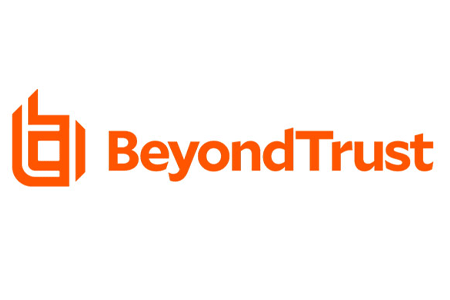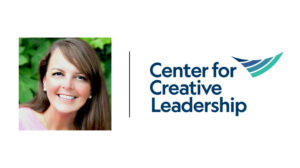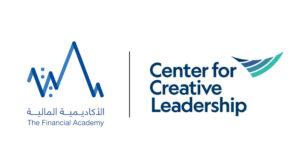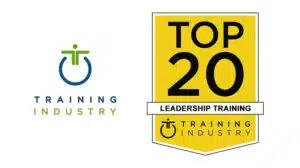
- school Campus Bookshelves
- menu_book Bookshelves
- perm_media Learning Objects
- login Login
- how_to_reg Request Instructor Account
- hub Instructor Commons
- Download Page (PDF)
- Download Full Book (PDF)
- Periodic Table
- Physics Constants
- Scientific Calculator
- Reference & Cite
- Tools expand_more
- Readability
selected template will load here
This action is not available.


7.5: Case Study 4 - A New Leadership Culture
- Last updated
- Save as PDF
- Page ID 22785

It’s been 6 months since Kolab was hired to lead a large, nonprofit organization called, International Education Center (IEC), which provides international education and information to the citizens of a Midwestern state. The organization provides opportunities for individuals to learn about different cultures and to gain an understanding about their role as citizens of the world. It does this by connecting the people of the state with visitors from all over the world in order to meet and learn from one another.
Prior to the job at the IEC, Kolab directed national programming and services for the Office of Refugee Resettlement (ORR) in Washington, D.C. Before her job at the ORR, she worked for an international relief agency and traveled extensively throughout Southeast Asia and Africa, working in the organization’s field offices, managing its daily operations.
Kolab, born in Cambodia, fled with her parents to the United States as refugees during the regime of Pol Pot and the Khmer Rouge (the followers of the Communist Party who ruled Cambodia from the 1975-1979). Her experiences growing up as a refugee fuel her motivation and passion for international work. It also shaped her expectations and working style. She is known to her colleagues as a “go-getter” and a “high performer.”
The board of trustees thought Kolab’s international experiences and goal-oriented, achievement-focused attitude was just what they needed to expand the organization on a national level. The previous president, Hanh, did not have the strategic thinking and vision to move IEC, even though she was very effective at building relationships throughout the state. After 10 years with IEC, Hanh decided to step down from her leadership role. This gave the board of directors an opportunity to hire someone like Kolab who can challenge employees and push the organization to reach its financial and fundraising goals.
Since Kolab’s hire, employee productivity and motivation has decreased. Staff used to enjoy coming to work, talking with one another, and planning programs and services for the community. Now they come to work because “we need a paycheck,” and they accomplish their tasks because “Kolab told me to do so.” There is no enthusiasm for the mission of the organization and the vision for the new work that Kolab and the directors created in a strategic planning meeting. A couple of times, when Kolab passed employee cubicles, she heard comments like, “She works us all like we don’t have a personal life,” “She’s so impersonable,” “I miss just chatting with people,” and “Hanh was never like this. She always made time to talk to us.”
Just last week, Kolab had a staff meeting, and the majority of staff sauntered in late. Throughout the meeting, they gave her blank stares, and, as soon as the meeting was over, they quickly left. Kolab is tired of the staff attitudes and behaviors. “The culture of this organization can’t operate the way it used to. I am determined to change it,” she thinks to herself.
- How does Kolab’s self-concept influence her ability to lead?
- What cultural value dimensions does the organization operate under? What about Kolab?
- What cultural intelligence strategies do you recommend for Kolab and her employees?
There are several issues here that Kolab needs to work through. First, Kolab has a specific leadership style that she likes to use. Her style is task- and goal-oriented, and is influenced by her upbringing. Her beliefs and her attitude is exactly what the board wants, but it is drastically different than the leadership style and organizational culture that is familiar to the employees. Second, Kolab wants the culture of the organization to move toward accountability, goals, and achievement; this is not to say that the organization was not goal-oriented before. Kolab’s vision for the organization’s goals, and how to get there, is a departure from what the cultural norm dictated in the past. Third, the staff has a self-concept that was developed as a result of Hanh’s leadership influence. They are feeling a dissonance between their self-concept and the new one that Kolab wants to enforce. Kolab would need to address all these areas and find strategies that help to keep her staff motivated during this time of change.
CI Model in Action
- Acquire: There are multiple levels of culture at work in this case study, particularly how individual cultural differences are expressed and interpreted. Kolab has an approach to work that differs from her employees; most of the approach is based on her personal experiences and history as a refugee. As a leader practicing cultural intelligence, Kolab will need to take a look at her self-concept and how it differs or corresponds with her staff. She can do this in two ways: first, by exploring her own personal history and second, by getting to know her staff as individuals. The knowledge she gains about herself and others will bridge her understanding of individual cultural differences and how they are expressed in an organization.
- Build: Kolab was hired because she is a “go-getter,” which typically means that she is achievement focused and oriented. Her staff interprets this as “impersonable.” To build an understanding of cultural differences, Kolab can build into her personal development plan ways to observe and listen to her staff. As an observer, she can pick up on verbal and nonverbal cues in her environment, thus helping her pay attention to her surroundings. By actively listening to her staff, she will learn how to adapt her behavior appropriately for the situation she is in.
- Contemplate: Kolab has a high ability to be resilient, which she developed as part of her personality and individual culture because of her experience as a refugee. This will be helpful to her in staying positive about the situation. However, one of the things she could improve on is her ability to gauge the emotions of her staff during their interactions. She is not accurately perceiving the thoughts and emotions, thus she is unable to handle the relationships in a way that is appropriate.
- Do: Kolab is trying to change the culture of the organization. As a leader, she needs to recognize that cultural shifts can be difficult, and it is her responsibility as a leader to help her employees make the changes successfully. She can help change cultural behavior through the use of stories. She can strategize this in different ways. She can set time for people to share the stories of the “old culture” and what they would like to see in the new culture. She can, using the power of words and language, share stories of herself, her vision, and where she would like the organization to be. She can combine her stories with the stories of her employees to create a unified story.
- No results found
Case Study 4: A New Leadership Culture
Ci model in action, 7.4 case study 4: a new leadership culture.
It’s been 6 months since Kolab was hired to lead a large, nonprofit organization called, International Education Center (IEC), which provides international education and information to the citizens of a Midwestern state. The organization provides opportunities for individuals to learn about different cultures and to gain an understanding about their role as citizens of the world. It does this by connecting the people of the state with visitors from all over the world in order to meet and learn from one another.
Prior to the job at the IEC, Kolab directed national programming and services for the Office of Refugee Resettlement (ORR) in Washington, D.C. Before her job at the ORR, she worked for an international relief agency and traveled extensively throughout Southeast Asia and Africa, working in the organization’s field offices, managing its daily operations.
Kolab, born in Cambodia, fled with her parents to the United States as refugees during the regime of Pol Pot and the Khmer Rouge (the followers of the Communist Party who ruled Cambodia from the 1975-1979). Her experiences growing up as a refugee fuel her motivation and passion for
international work. It also shaped her expectations and working style. She is known to her colleagues as a “go-getter” and a “high performer.”
The board of trustees thought Kolab’s international experiences and goal-oriented, achievement- focused attitude was just what they needed to expand the organization on a national level. The previous president, Hanh, did not have the strategic thinking and vision to move IEC, even though she was very effective at building relationships throughout the state. After 10 years with IEC, Hanh decided to step down from her leadership role. This gave the board of directors an opportunity to hire someone like Kolab who can challenge employees and push the organization to reach its financial and fundraising goals.
Since Kolab’s hire, employee productivity and motivation has decreased. Staff used to enjoy coming to work, talking with one another, and planning programs and services for the community. Now they come to work because “we need a paycheck,” and they accomplish their tasks because “Kolab told me to do so.” There is no enthusiasm for the mission of the organization and the vision for the new work
that Kolab and the directors created in a strategic planning meeting. A couple of times, when Kolab passed employee cubicles, she heard comments like, “She works us all like we don’t have a personal life,” “She’s so impersonable,” “I miss just chatting with people,” and “Hanh was never like this. She always made time to talk to us.”
Just last week, Kolab had a staff meeting, and the majority of staff sauntered in late. Throughout the meeting, they gave her blank stares, and, as soon as the meeting was over, they quickly left. Kolab is tired of the staff attitudes and behaviors. “The culture of this organization can’t operate the way it used to. I am determined to change it,” she thinks to herself.
1. How does Kolab’s self-concept influence her ability to lead?
2. What cultural value dimensions does the organization operate under? What about Kolab? 3. What cultural intelligence strategies do you recommend for Kolab and her employees?
There are several issues here that Kolab needs to work through. First, Kolab has a specific leadership style that she likes to use. Her style is task- and goal-oriented, and is influenced by her upbringing. Her beliefs and her attitude is exactly what the board wants, but it is drastically different than the leadership style and organizational culture that is familiar to the employees. Second, Kolab wants the culture of the organization to move toward accountability, goals, and achievement; this is not to say that the organization was not goal-oriented before. Kolab’s vision for the organization’s goals, and how to get there, is a departure from what the cultural norm dictated in the past. Third, the staff has a self-concept that was developed as a result of Hanh’s leadership influence. They are feeling a dissonance between their self-concept and the new one that Kolab wants to enforce. Kolab would need to address all these areas and find strategies that help to keep her staff motivated during this time of change.
Acquire: There are multiple levels of culture at work in this case study, particularly how individual cultural differences are expressed and interpreted. Kolab has an approach to work that differs from her employees; most of the approach is based on her personal experiences and history as a
refugee. As a leader practicing cultural intelligence, Kolab will need to take a look at her self- concept and how it differs or corresponds with her staff. She can do this in two ways: first, by exploring her own personal history and second, by getting to know her staff as individuals. The knowledge she gains about herself and others will bridge her understanding of individual cultural differences and how they are expressed in an organization.
Build: Kolab was hired because she is a “go-getter,” which typically means that she is achievement focused and oriented. Her staff interprets this as “impersonable.” To build an understanding of cultural differences, Kolab can build into her personal development plan ways to observe and listen to her staff. As an observer, she can pick up on verbal and nonverbal cues in her
environment, thus helping her pay attention to her surroundings. By actively listening to her staff, she will learn how to adapt her behavior appropriately for the situation she is in.
Contemplate: Kolab has a high ability to be resilient, which she developed as part of her
personality and individual culture because of her experience as a refugee. This will be helpful to her in staying positive about the situation. However, one of the things she could improve on is her ability to gauge the emotions of her staff during their interactions. She is not accurately perceiving the thoughts and emotions, thus she is unable to handle the relationships in a way that is
appropriate.
Do: Kolab is trying to change the culture of the organization. As a leader, she needs to recognize that cultural shifts can be difficult, and it is her responsibility as a leader to help her employees make the changes successfully. She can help change cultural behavior through the use of stories. She can strategize this in different ways. She can set time for people to share the stories of the “old culture” and what they would like to see in the new culture. She can, using the power of words and language, share stories of herself, her vision, and where she would like the organization to be. She can combine her stories with the stories of her employees to create a unified story.
- Understanding Culture
- Figure 2.2 Elements of Culture
- Individual Culture
- Value Dimensions of Culture
- Uncertainty
- Leadership Behaviors and Culture
- Cultural Intelligence Defined
- What Makes Cultural Intelligence Unique?
- The Role of Self-Efficacy in Cultural Intelligence
- Mindfulness and Self-Efficacy
- Mindlessness and Self-Efficacy
- Emphasize Self-Improvement
- Reduce Anxiety and Stress Related to Cultural Interactions
- Adapting and Performing
- Developing a Self-Concept
- Linguistic Relativity
- Behavior and Communication
- The Concept of Face
- Storytelling Unites Cultures
- Case Study 2: Young, Confident, and Moving too Fast Julia, who is 26 years old, recently graduated from the University of Chicago with her master’s
- Case Study 3: Building a Multicultural Team—Is it Worth it?
- Case Study 4: A New Leadership Culture (You are here)
- Case Study 5: Marketing the Right Messages
- Case Study 6: On Opposite Political Sides
- Case Study 7: From Hometown to Global Village
- Case Study 10: An Old Boy’s Club
Related documents
- Browse All Articles
- Newsletter Sign-Up
OrganizationalCulture →
No results found in working knowledge.
- Were any results found in one of the other content buckets on the left?
- Try removing some search filters.
- Use different search filters.

Search form
You are here.

Case Study: A New Leadership Culture

It’s been 6 months since Kolab was hired to lead a large, nonprofit organization called, International Education Center (IEC), which provides international education and information to the citizens of a Midwestern state. The organization provides opportunities for individuals to learn about different cultures and to gain an understanding about their role as citizens of the world. It does this by connecting the people of the state with visitors from all over the world in order to meet and learn from one another.
Prior to the job at the IEC, Kolab directed national programming and services for the Office of Refugee Resettlement (ORR) in Washington, D.C. Before her job at the ORR, she worked for an international relief agency and traveled extensively throughout Southeast Asia and Africa, working in the organization’s field offices, managing its daily operations.
Kolab, born in Cambodia, fled with her parents to the United States as refugees during the regime of Pol Pot and the Khmer Rouge (the followers of the Communist Party who ruled Cambodia from the 1975-1979). Her experiences growing up as a refugee fuel her motivation and passion for international work. It also shaped her expectations and working style. She is known to her colleagues as a “go-getter” and a “high performer.”
The board of trustees thought Kolab’s international experiences and goal-oriented, achievement- focused attitude was just what they needed to expand the organization on a national level. The previous president, Hanh, did not have the strategic thinking and vision to move IEC, even though she was very effective at building relationships throughout the state. After 10 years with IEC, Hanh decided to step down from her leadership role. This gave the board of directors an opportunity to hire someone like Kolab who can challenge employees and push the organization to reach its financial and fundraising goals.
Since Kolab’s hire, employee productivity and motivation has decreased. Staff used to enjoy coming to work, talking with one another, and planning programs and services for the community. Now they come to work because “we need a paycheck,” and they accomplish their tasks because “Kolab told me to do so.” There is no enthusiasm for the mission of the organization and the vision for the new work that Kolab and the directors created in a strategic planning meeting. A couple of times, when Kolab passed employee cubicles, she heard comments like, “She works us all like we don’t have a personal life,” “She’s so impersonable,” “I miss just chatting with people,” and “Hanh was never like this. She always made time to talk to us.”
Just last week, Kolab had a staff meeting, and the majority of staff sauntered in late. Throughout the meeting, they gave her blank stares, and, as soon as the meeting was over, they quickly left. Kolab is tired of the staff attitudes and behaviors. “The culture of this organization can’t operate the way it used to. I am determined to change it,” she thinks to herself.
- How does Kolab’s self-concept influence her ability to lead?
- What cultural value dimensions does the organization operate under? What about Kolab?
- What cultural intelligence strategies do you recommend for Kolab and her employees?
- CI Model in Action
- Why This Book?
- Who Is This Book For?
- Reading the Book
- Definitions and Terminology
- Chapter Summary
- The Difference between Managers and Leaders
- Importance of Leadership in a Global Economy
- Cultural Systems
- What is Culture?
- Culture is Learned
- Culture is Shared
- Culture is Dynamic
- Culture is Systemic
- Culture is Symbolic
- Stereotypes and Generalizations
- National Culture
- Regional Culture
- Organizational Culture
- Team Culture
- Individual Culture
- Assumptions
- Uncertainty
- Cultural Value Dimensions
- Leadership Behaviors and Culture
- Tuning into Cultural Intelligence
- Acquire Knowledge
- Build Your Strategic Thinking
- Contemplate Your Motivation and Ability to Work with Others
- Adapt and Perform
- What Makes Cultural Intelligence Unique?
- The Labyrinth of Cultural Intelligence
- What is Cognition?
- Metacognitive Knowledge
- Metacognitive Experience
- Metacognitive Strategies
- Connecting New Information
- Selecting Intentional Thinking Strategies
- Planning, Monitoring, and Evaluating
- Peer Learning
- Writing Your Experiences
- Gaining Cultural Knowledge
- Thinking, Being, and Staying Positive
- Finding a Coach or Mentor
- Being an Observer
- Active Listening
- Changing Your Questions
- What is Self-Efficacy?
- The Role of Self-Efficacy in Cultural Intelligence
- Emotional Intelligence and Self-Efficacy
- Mindfulness and Self-Efficacy
- Mindlessness and Self-Efficacy
- Identify Moments of Success
- Teach and Promote Resilience
- Provide Social Role Models
- Lead by Example
- Support Others in Their Self-Efficacy Development
- Emphasize Self-Improvement
- Reduce Anxiety and Stress Related to Cultural Interactions
- Developing a Self-Concept
- Developing a Self-Understanding
- Learning and Dissonance
- Larger Gaps, Larger Dissonance
- Adapting and Modifying Behaviors
- Linguistic Relativity
- Self-Disclosure
- Maintaining Relationships
- The Concept of Face
- Changing Behaviors, Changing Minds
- Storytelling Unites Cultures
- Adaptive Work
- Interdependency
- Consciousness
- A Return to the Cultural Labyrinth
- Back Matter
This action cannot be undo.
Choose a delete action Empty this page Remove this page and its subpages
Content is out of sync. You must reload the page to continue.
New page type Book Topic Interactive Learning Content
- Config Page
- Add Page Before
- Add Page After
- Delete Page

- SUGGESTED TOPICS
- The Magazine
- Newsletters
- Managing Yourself
- Managing Teams
- Work-life Balance
- The Big Idea
- Data & Visuals
- Reading Lists
- Case Selections
- HBR Learning
- Topic Feeds
- Account Settings
- Email Preferences
The Leader’s Guide to Corporate Culture
- Boris Groysberg,
- Jeremiah Lee,
- Jesse Price,
- J. Yo-Jud Cheng

Executives are often confounded by culture, because much of it is anchored in unspoken behaviors, mindsets, and social patterns. Many leaders either let it go unmanaged or relegate it to HR, where it becomes a secondary concern for the business. This is a mistake, because properly managed, culture can help them achieve change and build organizations that will thrive in even the most trying times.
The authors have reviewed the literature on culture and distilled eight distinct culture styles: caring, focused on relationships and mutual trust; purpose, exemplified by idealism and altruism; learning, characterized by exploration, expansiveness, and creativity; enjoyment, expressed through fun and excitement; results, characterized by achievement and winning; authority, defined by strength, decisiveness, and boldness; safety, defined by planning, caution, and preparedness; and order, focused on respect, structure, and shared norms.
These eight styles fit into an “integrated culture framework” according to the degree to which they reflect independence or interdependence (people interactions) and flexibility or stability (response to change). They can be used to diagnose and describe highly complex and diverse behavioral patterns in a culture and to model how likely an individual leader is to align with and shape that culture.
Through research and practical experience, the authors have arrived at five insights regarding culture’s effect on companies’ success: (1) When aligned with strategy and leadership, a strong culture drives positive organizational outcomes. (2) Selecting or developing leaders for the future requires a forward-looking strategy and culture. (3) In a merger, designing a new culture on the basis of complementary strengths can speed up integration and create more value over time. (4) In a dynamic, uncertain environment, in which organizations must be more agile, learning gains importance. (5) A strong culture can be a significant liability when it is misaligned with strategy.
How to manage the eight critical elements of organizational life
Strategy and culture are among the primary levers at top leaders’ disposal in their never-ending quest to maintain organizational viability and effectiveness. Strategy offers a formal logic for the company’s goals and orients people around them. Culture expresses goals through values and beliefs and guides activity through shared assumptions and group norms.
A survey to get the conversation started
- BG Boris Groysberg is a professor of business administration in the Organizational Behavior unit at Harvard Business School and a faculty affiliate at the school’s Race, Gender & Equity Initiative. He is the coauthor, with Colleen Ammerman, of Glass Half-Broken: Shattering the Barriers That Still Hold Women Back at Work (Harvard Business Review Press, 2021). bgroysberg
- JL Jeremiah Lee leads innovation for advisory services at Spencer Stuart. He and Jesse Price are cofounders of two culture-related businesses.
- JP Jesse Price is a leader in organizational culture services at Spencer Stuart. He and Jeremiah Lee are cofounders of two culture-related businesses.
- JC J. Yo-Jud Cheng is an Assistant Professor of Business Administration in the Strategy, Ethics and Entrepreneurship area at Darden.
Partner Center
This is the table of contents for the book Cultural Intelligence for Leaders (v. 1.0). For more details on it (including licensing), click here .
This book is licensed under a Creative Commons by-nc-sa 3.0 license. See the license for more details, but that basically means you can share this book as long as you credit the author (but see below), don't make money from it, and do make it available to everyone else under the same terms.
This book was accessible as of December 29, 2012, and it was downloaded then by Andy Schmitz in an effort to preserve the availability of this book.
Normally, the author and publisher would be credited here. However, the publisher has asked for the customary Creative Commons attribution to the original publisher, authors, title, and book URI to be removed. Additionally, per the publisher's request, their name has been removed in some passages. More information is available on this project's attribution page .
For more information on the source of this book, or why it is available for free, please see the project's home page . You can browse or download additional books there. To download a .zip file containing this book to use offline, simply click here .

Cultural Intelligence for Leaders
Table of contents, introduction: a global community, chapter 1: culturally intelligent leadership matters.
- The Difference between Managers and Leaders
- Importance of Leadership in a Global Economy
- Chapter Summary
Chapter 2: Understanding Culture
- Cultural Systems
- What is Culture?
- Culture is Learned
- Culture is Shared
- Culture is Dynamic
- Culture is Systemic
- Culture is Symbolic
- Stereotypes and Generalizations
- Levels of Culture
- The Roots of Culture
- Value Dimensions of Culture
- Culture and Leadership
Chapter 3: Cultural Intelligence Defined
- What is Cultural Intelligence?
- Cultural Intelligence Model
- What Makes Cultural Intelligence Unique?
- The Labyrinth of Cultural Intelligence
Chapter 4: Thinking About Thinking
- What is Cognition?
- What is Metacognition?
- Techniques for Developing Strategic Thinking
- Cultural Strategic Thinking Techniques
Chapter 5: I Think I Can and I Will
- What is Self-Efficacy?
- The Role of Self-Efficacy in Cultural Intelligence
- Emotional Intelligence and Self-Efficacy
- Mindfulness and Self-Efficacy
- Mindlessness and Self-Efficacy
- Developing Your Self-Efficacy
Chapter 6: Adapting and Performing
- Concept of Self
- Cognitive Dissonance
- Linguistic Relativity
- Behavior and Communication
- Changing Behaviors, Changing Minds
- Changing Minds Through Storytelling
Chapter 7: Cultural Intelligence in Action
- Chapter Introduction
- Case Study 1: Resistance to Change
- Case Study 2: Young, Confident, and Moving too Fast
- Case Study 3: Building a Multicultural Team—Is it Worth it?
- Case Study 4: A New Leadership Culture
- Case Study 5: Marketing the Right Messages
- Case Study 6: On Opposite Political Sides
- Case Study 7: From Hometown to Global Village
- Case Study 8: No Dogs Allowed
- Case Study 9: Faith and Health
- Case Study 10: An Old Boy’s Club
Chapter 8: The Future of Cultural Intelligence
- Adaptive Work
- Interdependency
- Consciousness
- A Return to the Cultural Labyrinth
Leading with Cultural Intelligence
Table of contents, licensing information, introduction: a global community, chapter 1: culturally intelligent leadership matters.
- The Difference between Managers and Leaders
- Importance of Leadership in a Global Economy
- Chapter Summary
Chapter 2: Understanding Culture
- Cultural Systems
- What is Culture?
- Culture is Learned
- Culture is Shared
- Culture is Dynamic
- Culture is Systemic
- Culture is Symbolic
- Stereotypes and Generalizations
- Levels of Culture
- The Roots of Culture
- Value Dimensions of Culture
- Culture and Leadership
Chapter 3: Cultural Intelligence Defined
- What is Cultural Intelligence?
- Cultural Intelligence Model
- What Makes Cultural Intelligence Unique?
- The Labyrinth of Cultural Intelligence
Chapter 4: Thinking About Thinking
- What is Cognition?
- What is Metacognition?
- Techniques for Developing Strategic Thinking
- Cultural Strategic Thinking Techniques
Chapter 5: I Think I Can and I Will
- What is Self-Efficacy?
- The Role of Self-Efficacy in Cultural Intelligence
- Emotional Intelligence and Self-Efficacy
- Mindfulness and Self-Efficacy
- Mindlessness and Self-Efficacy
- Developing Your Self-Efficacy
Chapter 6: Adapting and Performing
- Concept of Self
- Cognitive Dissonance
- Linguistic Relativity
- Behavior and Communication
- Changing Behaviors, Changing Minds
- Changing Minds Through Storytelling
Chapter 7: Cultural Intelligence in Action
- Chapter Introduction
- Case Study 1: Resistance to Change
- Case Study 2: Young, Confident, and Moving too Fast
- Case Study 3: Building a Multicultural Team—Is it Worth it?
- Case Study 4: A New Leadership Culture
- Case Study 5: Marketing the Right Messages
- Case Study 6: On Opposite Political Sides
- Case Study 7: From Hometown to Global Village
- Case Study 8: No Dogs Allowed
- Case Study 9: Faith and Health
- Case Study 10: An Old Boy’s Club
Chapter 8: The Future of Cultural Intelligence
- Adaptive Work
- Interdependency
- Consciousness
- A Return to the Cultural Labyrinth
- : Technology, Electronics & Software
Building a Culture of Learning and Leadership at Scale With Online Training for Frontline Leaders


Client Profile & Challenge
BeyondTrust is a cyber-security company intent on revolutionizing the way the world secures and manages privileged access to information. The company, which is the worldwide leader in Privileged Access Management (PAM) with more than 20,000 customers (including 70% of the Fortune 500) focuses on empowering organizations to improve cybersecurity and operational efficiency.
After a series of acquisitions, BeyondTrust recognized many people within the organization were put into leadership positions without much prior development – a concept we refer to as “accidental leaders.” They also lacked a common leadership lexicon that could be applied in day-to-day work. The organization wanted to build and reinforce a culture of learning as well as instill the foundational competencies required to lead others.
BeyondTrust needed a leadership development experience that would be the first step in level-setting how all of their managers would lead. “As a global organization, we needed a solution that was not just virtual, but inclusive, self-paced, and of course one that would make a lasting impact,” says Laura Edwards-Lassner, Senior Director of Talent Management at BeyondTrust.

Solution & Results
BeyondTrust partnered with us to run a pilot of our Frontline Leader Impact (FLI) virtual program for BeyondTrust’s HR team and other key leaders at different levels across the organization. “The course was 6 weeks and covered the areas we felt were important for our global leaders – including self-awareness, learning agility, communication, political savvy, influencing outcomes, and motivating others,” says Edwards-Lassner.
The pilot was so well received that 2 additional global, cross-functional cohorts were quickly scheduled. In the second year of the initiative, 100% of the Executive Leadership Team and over 90% of BeyondTrust’s managers will have completed FLI. To enrich the learning and make it even more impactful for their leaders – and relevant to their business – we developed additional elements in and around the core FLI experience for the new cohorts. Highly engaged FLI graduates were assigned as Team Leads for each cohort, which included employees from the C-level to frontline leaders. These Team Leads held weekly live, interactive conversations with teams from each of the cohorts. “These discussions further pushed our global cross-functional mission and made the entire experience more interesting. I believe this individualized approach has made all the difference,” says Edwards-Lassner. “One of our values is accountability and this has really nurtured that in our leaders.”
As this large-scale initiative continues, BeyondTrust’s top company leaders are making it a priority to embrace FLI practices and language, and they continue to see tangible results. The company has experienced an increase in manager performance and engagement, and a decrease in voluntary attrition, as graduates model the new culture of leadership and professional development. The majority of participants reported FLI was more engaging than other online programs they’ve taken, and the buzz about it is beginning to spread as employees want to know how they can be a part of the next cohort. BeyondTrust plans to continue to roll out FLI to 100 more managers and high potential non-managers in the year following the publishing of this case study.
Impact of FLI on BeyondTrust Leaders
- Learners maintained high levels of engagement,
- Encouraged a new way of thinking about leadership,
- Increased global and cross-functional discussions,
- Generated a positive shift in change management, and
- Participants expressed enthusiasm for the opportunity.
Participants Say
“We are now more nimble, more resilient, and able to pivot and change to better serve our customers. Relationships have been formed and strengthened across the business, globally.”
Laura Edwards-Lassner
Senior Director of Talent Management
“As the CEO of a diverse global technology firm, I found the FLI course to be timely, relevant, and useful. I believe it will provide a common language/methodology to connect all of our leaders across the world.”
Matt Dircks
CEO & Board Member
“We’re going to have all new managers go through FLI as part of their onboarding process. We also plan to create additional leadership development experiences that will build on the foundation FLI has established.”
Mark Rankin
Partner With Us
We are here to help you prepare your leaders to excel in challenging times and grow your organization into the future. Give your leaders the tools and language they need to succeed with the Frontline Leader Impact online leadership development program.
| What to Explore Next

Learn Leadership Skills Online and Transform Without Travel
| related solutions.

Frontline Leader Impact

Leadership in Technology Fields
Sign Up for Newsletters
Don’t miss a single insight! Get our latest cutting-edge, research-based leadership content sent directly to your inbox.
Related Content

Andi Williams, Director of the Nonprofit and Population Health Leadership practices for Societal Impact at CCL, has been awarded the 2024 Shirley Chater Enduring Leadership Award by NurseTRUST.

CCL has partnered with The Financial Academy to further develop leadership effectiveness in the financial sector of Saudi Arabia.

We’ve once again been named a top provider of leadership training on Training Industry.com’s global Top 20 Leadership Training Companies list.

- Enterprise Solutions
- LEAD: The Neuroscience of Effective Management
- Brain-Based Coaching Certificate
- Certificate in the Foundations of NeuroLeadership
- NLI SCARF ® Assessment
- Culture & Leadership Case Studies
- Diversity, Equity & Inclusion Case Studies
- Performance Case Studies
- NeuroLeadership Journal
- Your Brain at Work – Blog
- Your Brain at Work – The Podcast
- Recorded Webinars
- Webinars & Your Brain at Work
- Become an NLI Insider
- Membership Portal
- Global Leadership Team

A case study of Crossroads Theatre: A regional African American theater in New Brunswick, New Jersey
Key organizational theories and concepts, including leadership, communication, marketing and fundraising, were reviewed and then applied to the case study examination of Crossroads Theatre, a prominent African American theatre in New Brunswick, New Jersey. Crossroads Theatre, a professional identity-based theatre, established in 1978, was well-known for being an artistic home and community for African American artists, directors, actors and playwrights; and it is the only African American theatre to win a Tony Award for Outstanding Regional Theatre, Even with celebrity support from actors including Bill Cosby and Phylicia Rashad, and numerous awards for outstanding service, the theatre was forced to suspend operations in 2001 due to a financial debt of approximately $2 million. The case study sought to understand the factors, both internal and external, that led to the suspension. Primary and secondary data was obtained through written surveys and phone interview with former staff and board members of the theatre. Questions were asked in order to obtain information regarding the leadership, communication, marketing and fundraising organizational structures and culture.
Access statement
Usage metrics.

- Strategy, management and organisational behaviour
- Drama, theatre and performance studies

IMAGES
VIDEO
COMMENTS
7.5: Case Study 4 - A New Leadership Culture. It's been 6 months since Kolab was hired to lead a large, nonprofit organization called, International Education Center (IEC), which provides international education and information to the citizens of a Midwestern state. The organization provides opportunities for individuals to learn about ...
7.4 Case Study 4: A New Leadership Culture. It's been 6 months since Kolab was hired to lead a large, nonprofit organization called, International Education Center (IEC), which provides international education and information to the citizens of a Midwestern state. The organization provides opportunities for individuals to learn about ...
Written Assignment Unit 3 Case Study 4: A New Leadership Culture. Description of the case: Kolab, born in Cambodia and later fled to the United States with her family as refugees during the regime of Pol Pot and the Khmer Rouge is a former director at the Office of Refugee Resettlement (ORR) in Washington, D., who directed their national programming and services.
CASE STUDY 4: A NEW LEADERSHIP CULTURE. University of The People BUS 5211: MANAGING IN THE GLOBAL ECONOMY DR. Katherine KEMMERER September 26, 2023. CASE STUDY 4: A NEW LEADERSHIP CULTURE. Case Introduction After being hired six months ago, Kolab, a high-performing leader with extensive international experience, was tasked with expanding the ...
Physio Ex Exercise 9 Activity 4; Active Learning Template Nursing Skill form Therapeutic Communication; 3.4.1.7 Lab - Research a Hardware Upgrade; BANA 2082- Exam 4 study guide 2; BANA 2082 - Chapter 1.6; Bates Test questions Children: Infancy Through Adolescence; Trending. Unit conversion gizmo h hw h h hw h sh wybywbhwyhwuhuwhw wbwbe s. W w w
In document Leading with Cultural Intelligence (Page 167-170) CI Model in Action. 7.4 Case Study 4: A New Leadership Culture. It's been 6 months since Kolab was hired to lead a large, nonprofit organization called, International Education Center (IEC), which provides international education and information to the citizens of a Midwestern state.
7.4 Case Study 4: A New Leadership Culture. It's been 6 months since Kolab was hired to lead a large, nonprofit organization called, International Education Center (IEC), which provides international education and information to the citizens of a Midwestern state. The organization provides opportunities for individuals to learn about ...
With urban environments growing fast in recent decades, KONE's deep experience creates tremendous potential for growth. But the company faced challenges in turning that potential into reality and meeting the ambitious goal of moving from No. 4 in the industry to No. 1. In the Americas, internal concerns typically overruled customer needs.
New research on organizational culture from Harvard Business School faculty on issues including culture development, using values as a guidance system, and recruitment. ... James Heskett asks whether the study of leadership should involve more emphasis on learning from failure? Open for comment; 0 Comments. 03 Oct 2023; HBS Case
Case Study: A New Leadership Culture . 2 October, 2015 - 15:12 . Available under Creative Commons-NonCommercial-ShareAlike 4.0 International License. It's been 6 months since Kolab was hired to lead a large, nonprofit organization called, International Education Center (IEC), which provides international education and information to the ...
Through research and practical experience, the authors have arrived at five insights regarding culture's effect on companies' success: (1) When aligned with strategy and leadership, a strong ...
Chapter 7: Cultural Intelligence in Action. Chapter Introduction. Case Study 1: Resistance to Change. Case Study 2: Young, Confident, and Moving too Fast. Case Study 3: Building a Multicultural Team—Is it Worth it? Case Study 4: A New Leadership Culture. Case Study 5: Marketing the Right Messages. Case Study 6: On Opposite Political Sides.
Chapter Introduction. Case Study 1: Resistance to Change. Case Study 2: Young, Confident, and Moving too Fast. Case Study 3: Building a Multicultural Team—Is it Worth it? Case Study 4: A New Leadership Culture. Case Study 5: Marketing the Right Messages. Case Study 6: On Opposite Political Sides. Case Study 7: From Hometown to Global Village.
This problem has been solved! You'll get a detailed solution from a subject matter expert that helps you learn core concepts. Question: In Chapter 7 of your textbook, Cultural Intelligence for Leaders, read Case Study 4: A New Leadership Culture. Please be sure to particularly address the following questions related to the case: How does Kolab ...
Written Assignment - 3 Question: In Chapter 7 of your textbook, Cultural Intelligence for Leaders, read Case Study 4: A New Leadership Culture. Please be sure to particularly address the following questions related to the case: ... Cultural Intelligence Case Study. Anonymous Business School, University of the People BUS5211: Managing in the ...
BeyondTrust plans to continue to roll out FLI to 100 more managers and high potential non-managers in the year following the publishing of this case study. Impact of FLI on BeyondTrust Leaders. Learners maintained high levels of engagement, Encouraged a new way of thinking about leadership, Increased global and cross-functional discussions,
Case Study 4: A New Leadership Culture Case Study 4: A New Leadership Culture University of the People UNIT 3: Cultural Intelligence and Leadership BUS 5211: Managing In the Global Economy Instructor: Dr. Nassrullah Zonozy September 23, 2020. Abstract Leadership competence is a very important cultural component in the twenty-first century, whereas dispositions or actions must include foreign ...
Featured Case Study: Microsoft. As detailed in the Harvard Business Review, Microsoft remade its leadership framework with the brain in mind—going from exhaustive detail to essential principles. Concurrently, it also embraced a growth mindset, shifting from a culture of know-it-alls to a culture of learn-it-alls. READ THE FULL CASE STUDY ...
Step 1. CASE STUDY 4: A NEW LEADERSHIP CULTURE. 1. Influence of Kolab's Self-Concept on Her Leadership Abiliti... View the full answer Step 2. Unlock.
Case Study 4: A New Leadership Culture Written Assignment Unit 3 UoPeople. Kolab is a leader of a non-profit organization <IEC=. She came from a refugee background. She was born in Cambodia and left with her parents to the USA. Her background affected her decisions and leadership style. She is a goal-oriented and achievement focus person that ...
Case Study 4 : A New Leadership Culture University of the People BUS 5211: MANAGING IN THE GLOBAL ECONOMY James Simmons April 28, 2021. Abstract It is important to comprehend cultural intelligence. Cultural knowledge, if well understood, allows one to comprehend how others feel, their biases, and their motives. ...
Key organizational theories and concepts, including leadership, communication, marketing and fundraising, were reviewed and then applied to the case study examination of Crossroads Theatre, a prominent African American theatre in New Brunswick, New Jersey. Crossroads Theatre, a professional identity-based theatre, established in 1978, was well-known for being an artistic home and community for ...